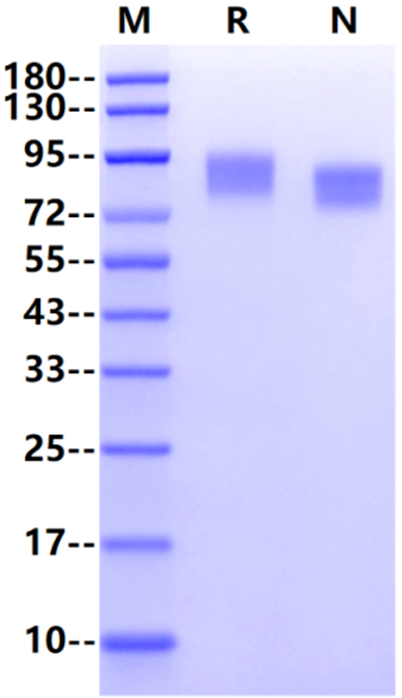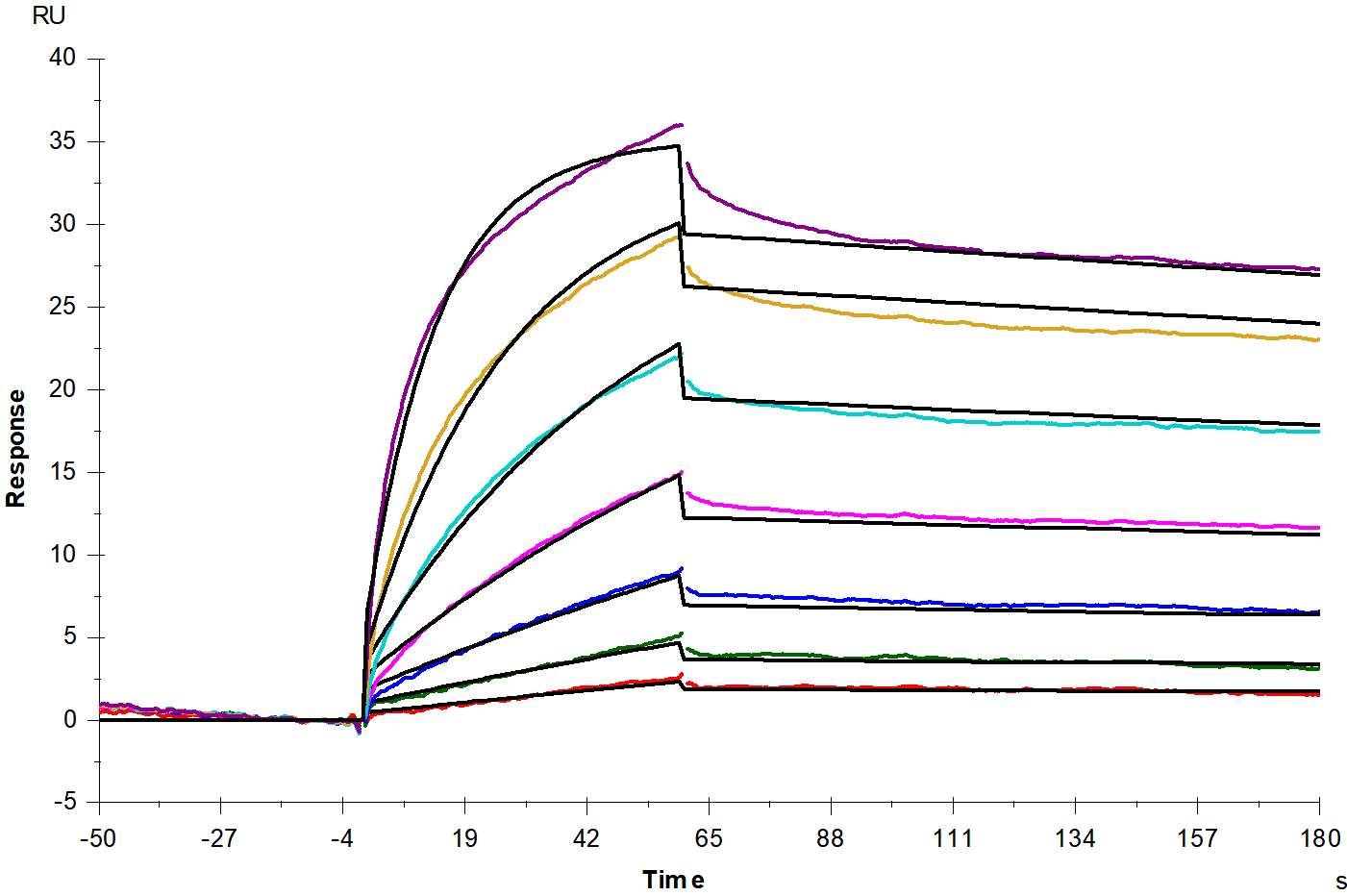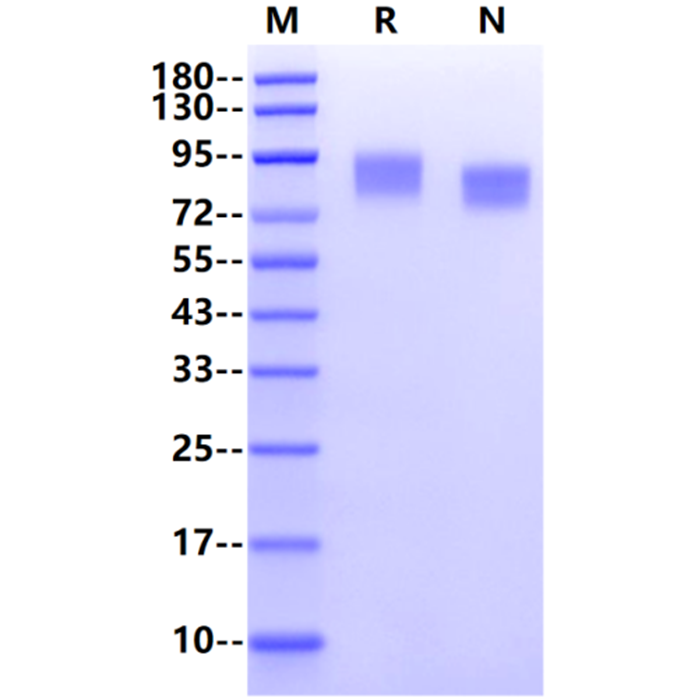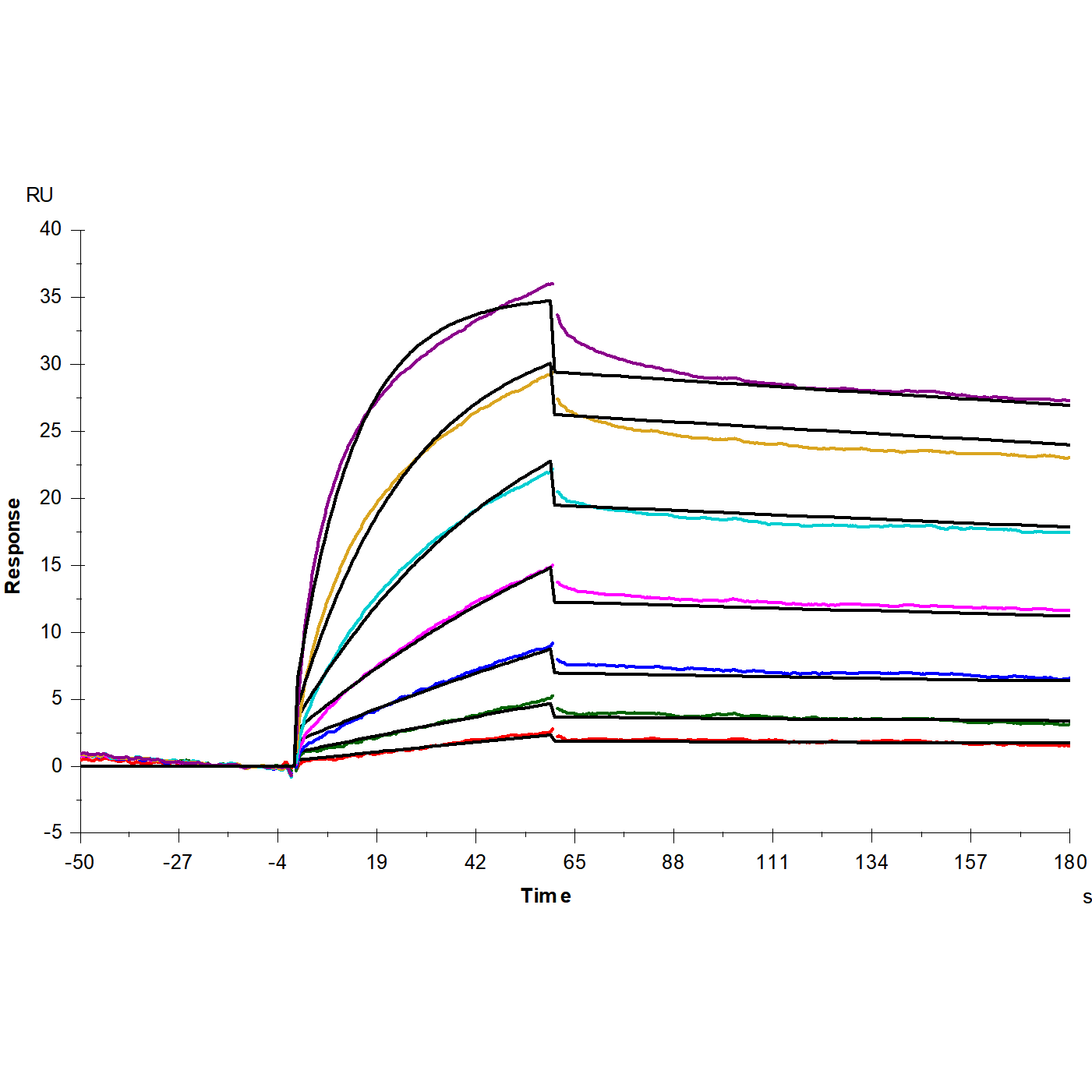Product Details
Product Details
Product Specification
| Species | Mouse |
| Synonyms | M-CSFR, CD115, FIM2, FMS, CSF1R |
| Accession | P09581 |
| Amino Acid Sequence | Ala20-Ser511, with C-8*His |
| Expression System | HEK293 |
| Molecular Weight | 80-95kDa |
| Purity | >95% by SDS-PAGE |
| Endotoxin | <0.1EU/μg |
| Conjugation | Unconjugated |
| Tag | His Tag |
| Physical Appearance | Lyophilized Powder |
| Storage Buffer | PBS, pH7.4 |
| Reconstitution | Reconstitute at 0.1-1 mg/ml according to the size in ultrapure water after rapid centrifugation. |
| Stability & Storage | · 12 months from date of receipt, lyophilized powder stored at -20 to -80℃. · 3 months, -20 to -80℃ under sterile conditions after reconstitution. · 1 week, 2 to 8℃ under sterile conditions after reconstitution. · Please avoid repeated freeze-thaw cycles. |
| Reference |
1、Sapi E. et al. (1999) The role of CSF-1 in normal and neoplastic breast physiology. Proc Soc Exp Biol Med. 220(1): 1-8. 2、Sapi E. (2004) The role of CSF-1 in normal physiology of mammary gland and breast cancer: an update. Exp Biol Med (Maywood). 229(1): 1-11. 3、Bonifer C. et al. (2008) The transcriptional regulation of the Colony-Stimulating Factor 1 Receptor (csf1r) gene during hematopoiesis. Front Biosci. 13: 549-560. |
Background
Colony stimulating factor 1 receptor (CSF1R) is also known as macrophage colony-stimulating factor receptor (M-CSFR), CD115 Cluster of Differentiation 115 (CD115), C-FMS, CSFR, FIM2, FMS, and is a member of the type Ⅲ subfamily of receptor tyrosine kinases. M-CSF receptor, the product of the c-fms proto-oncogene, is a member of the type III subfamily of receptor tyrosine kinases that also includes receptors for SCF and PDGF. These receptors each contain five immunoglobulin-like domains in their extracellular domain (ECD) and a split kinase domain in their intracellular region. M-CSF receptor is expressed primarily on cells of the monocyte/macrophage lineage, dendritic cells, stem cells and in the developing placenta. M-CSF R engagement is continuously required for macrophage survival and regulates lineage decisions and maturation of monocytes, macrophages, osteoclasts and DC. M-CSF R and integrin alpha v beta 3 share signaling pathways during osteoclastogenesis and deletion of either causes osteopetrosis. In the brain, microglia expressing increased M-CSF R are concentrated with Alzheimers a beta peptide, but their role in pathogenesis is unclear.
Picture
Picture
SDS-PAGE

SPR

Anti-His antibody Immobilized on CM5 Chip captured M-CSFR His Tag, Mouse (Cat. No. UA010198), can bind M-CSF, Mouse (Cat. No. UA040128) with an affinity constant of 0.64 nM as determined in SPR assay.




